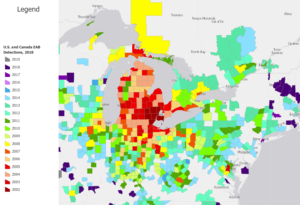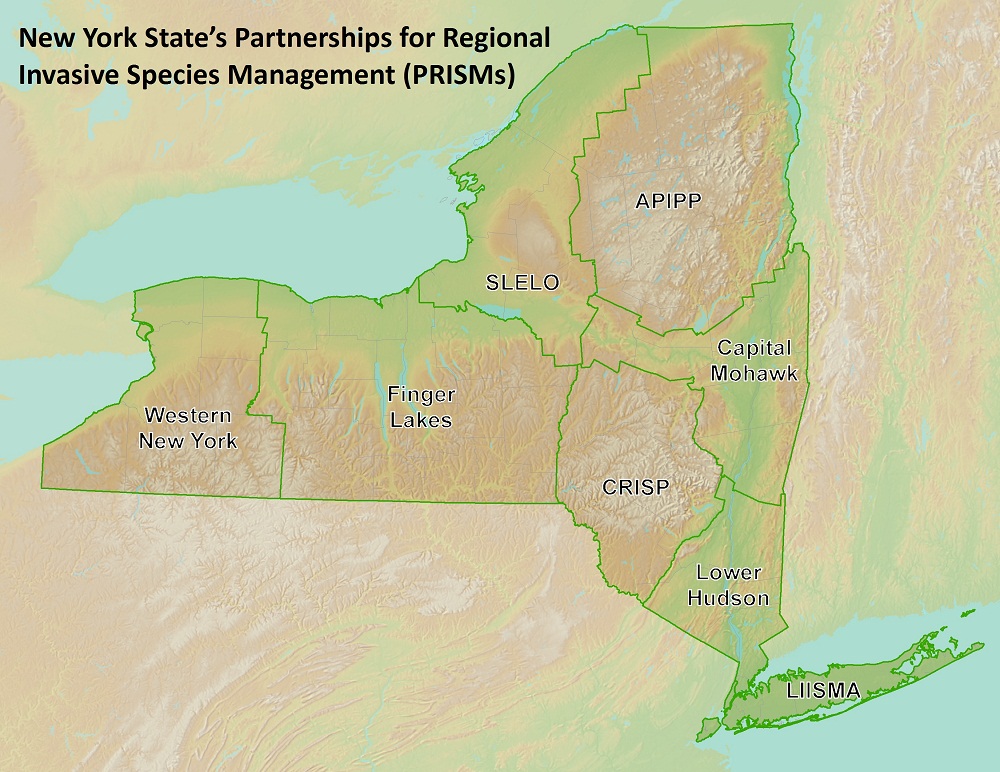Salvaging the Ash
The emerald ash borer may have won in New York. Last summer DEC abandoned its quarantine area, admitting that the regulation wasn’t effective in stopping the spread of the pest. The state created the quarantine in 2015 to slow the insect, which is a shiny green beetle about the size of a penny. The borer likely will ultimately bring about the end of the state’s 700 million ash trees.
Now loggers are rushing to harvest the valuable trees before their value is destroyed by the invasive bugs.
“Emerald ash borer is probably the most thorough killing machine that we’ve come across in my career over the last 35 years,” said Tom Gerow, general manager for The Wagner Companies, which specializes in furniture-grade lumber.
In its announcement, DEC noted that “Harvesting this resource before the infestation becomes even more widespread is in the best interest of forest landowners and the forest products industry as infested ash degrades quickly, resulting in decreased economic value and greater risk of personal injury and property damage as infested trees quickly weaken.”
Wagner is sawing ash trees at its mills at about double the rate it used to.
In Cortland County ash trees are being removed from two public sites: Dwyer Park in Preble and the Cortland County landfill. Approximately 20 trees were removed from Preble and the second site is in the planning stage. Once the trees are removed the county plans to replace them using money raised from selling the healthy trees.
But not all hope has been lost. As reported at phys.org, research at Penn State is focused on identifying the traits that allow some trees to survive. Penn State has an ash plantation containing the largest collection of green ash germplasm in one location in the world, established by Kim Steiner in 1975.
Penn State molecular geneticist John Carlson is looking specifically at the genetic mechanisms by which surviving trees might be battling the insects. He and Steiner have been talking with officials in the Pennsylvania Department of Conservation and Natural Resources Bureau of Forestry about saving white ash and green ash in the state by preserving and propagating lingering ash trees remaining in the Penn State ash plantation, on state forest lands and in private forests.
“Some trees were left that appeared very healthy with good canopies and not very many EAB exit holes,” Carlson said. “So those represent potentially resistant genotypes. There are definitely some biochemical or genetic responses—it’s an indication of some genetic basis to tolerance in the trees. There have been previous molecular studies comparing lingering versus fully susceptible green ash trees treated with EAB larvae.”
“We’re hoping that the state will work with us on creating a seed orchard because we don’t have all the resources we need to do that. This is an issue that is going to continue to increase in importance and severity because there will be more frequent introductions of exotic pests and diseases going forward,” Carlson said.





